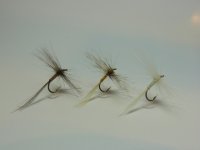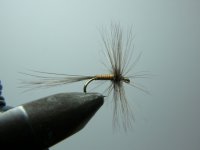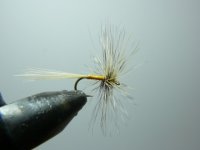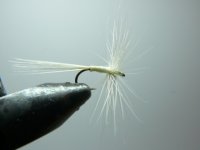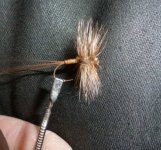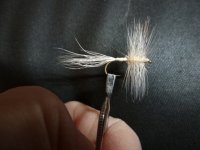GenCon
Active member
- Joined
- Jan 15, 2013
- Messages
- 1,699
On this cold snowy day. What to do? Tie flies. Most that know me know that I like to tie and fish with classic style dry flies. That being said I do tie and use parachutes, comparaduns, cdc drys. But there is something special with some of the older style patterns like Flicks variants. He did not create all of them but he is credited to popularizing them in his clasic book Art Flicks stream side guide. This book was the tying bible for me as a kid. Around 12 or 13 yrs. old. I am almost 55 now. How did that happen? So what we have is the Dun Variant which was to imitate a Isonicia, the Grey Fox which was Flicks version of the Green Drake and the Cream Drake imitates the Potamanthus. The Cream Drake is also a great serching fly to use any time during the Summer.
I hope you like them too,
GenCon
I hope you like them too,
GenCon

